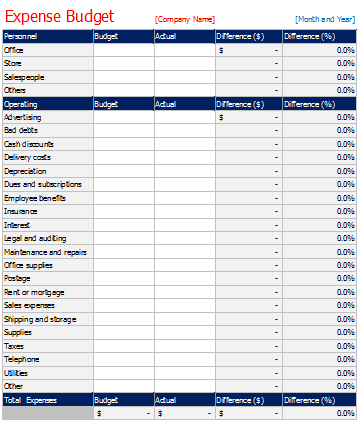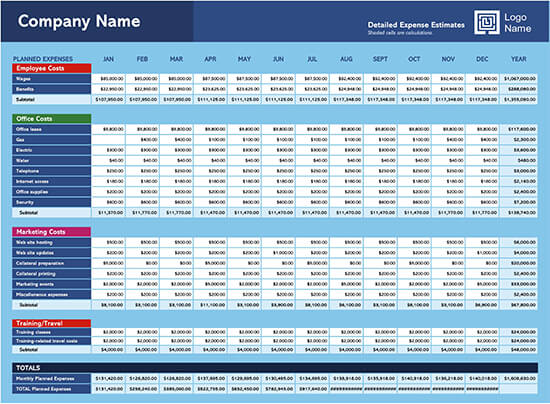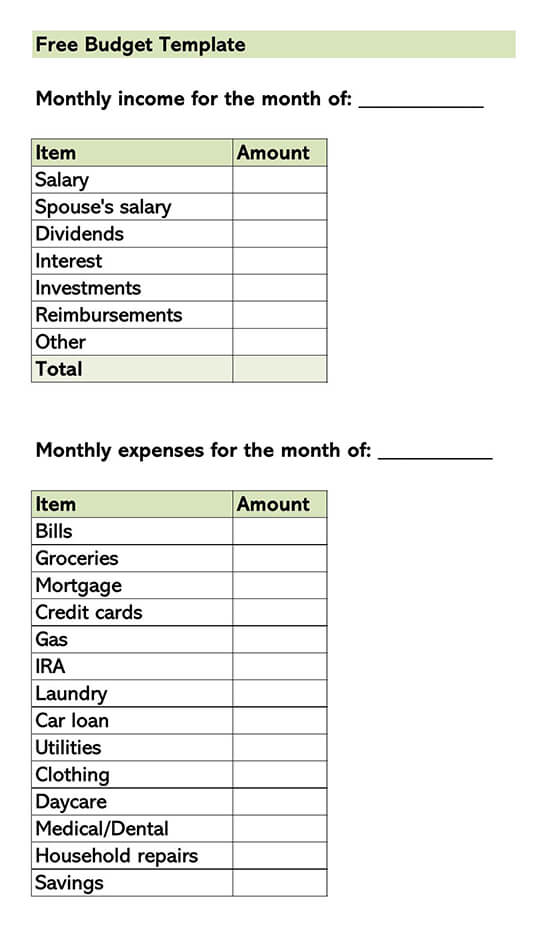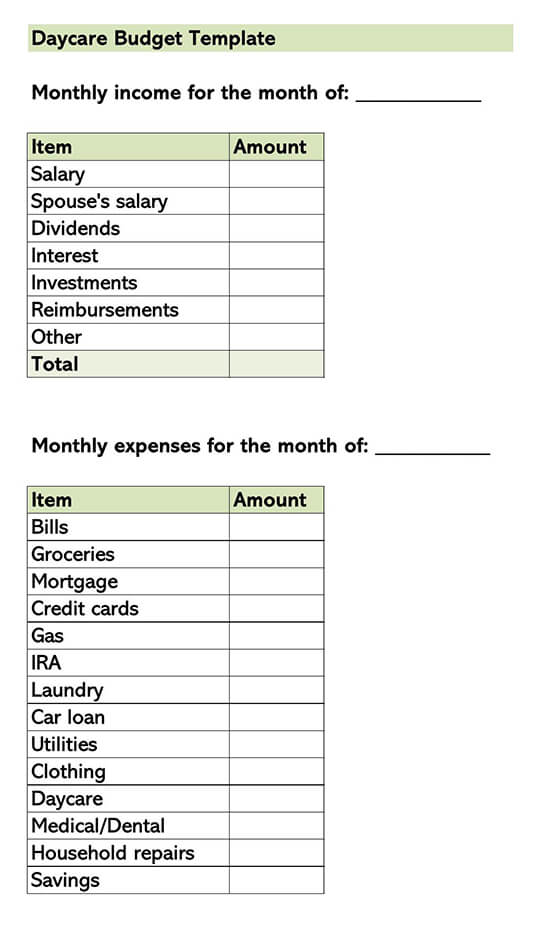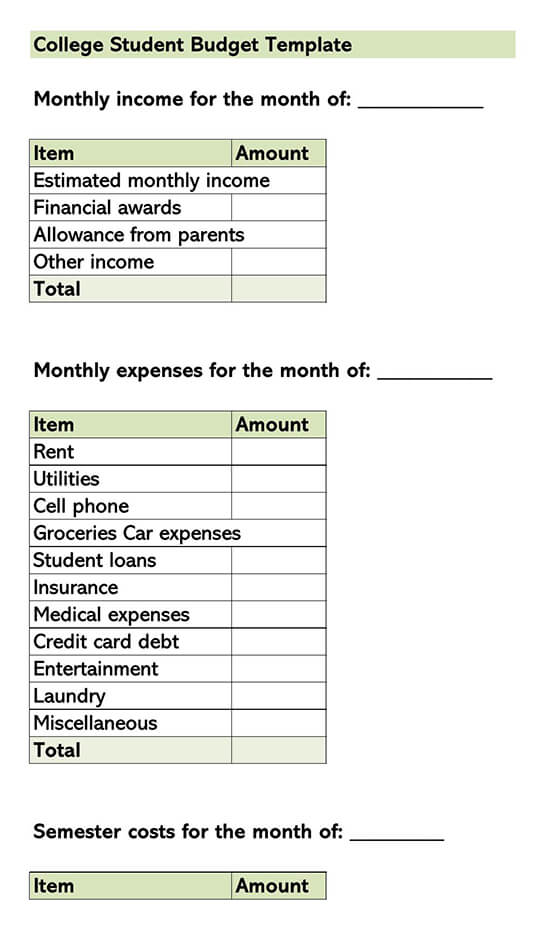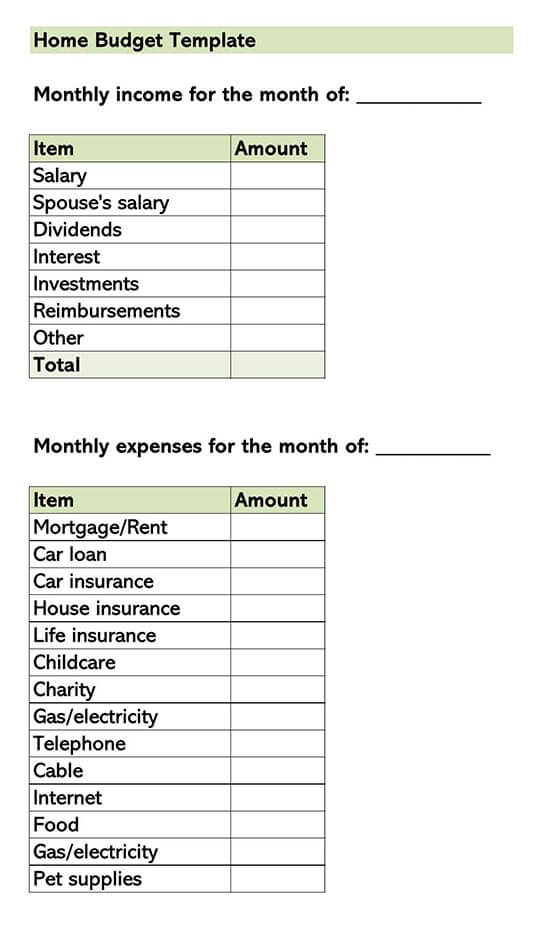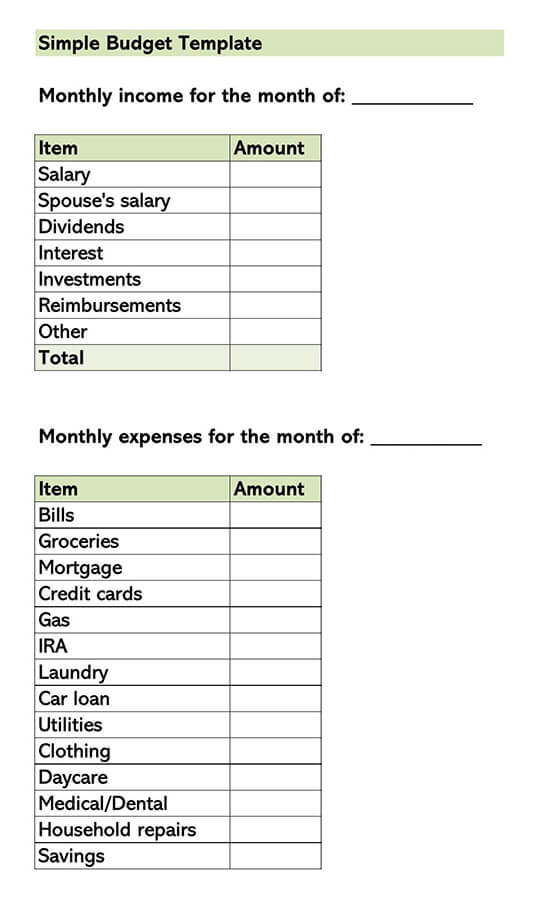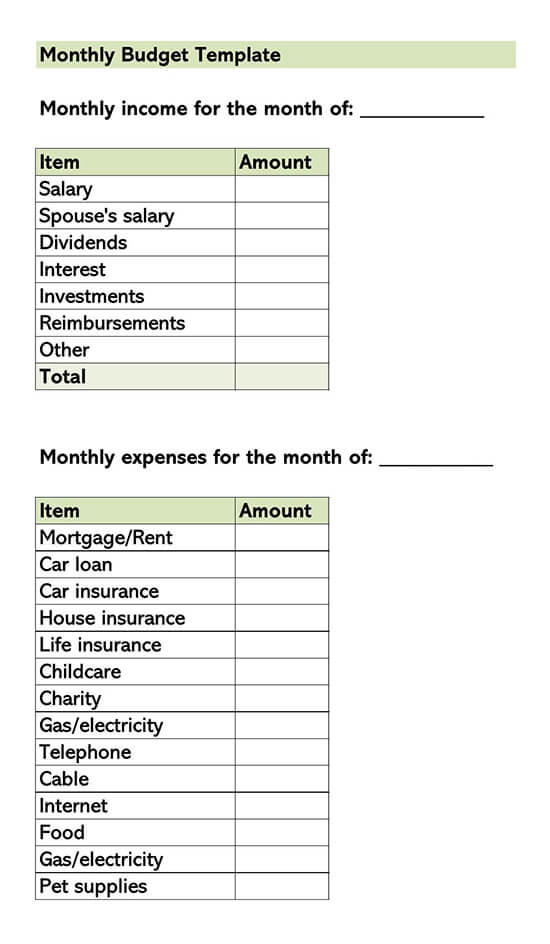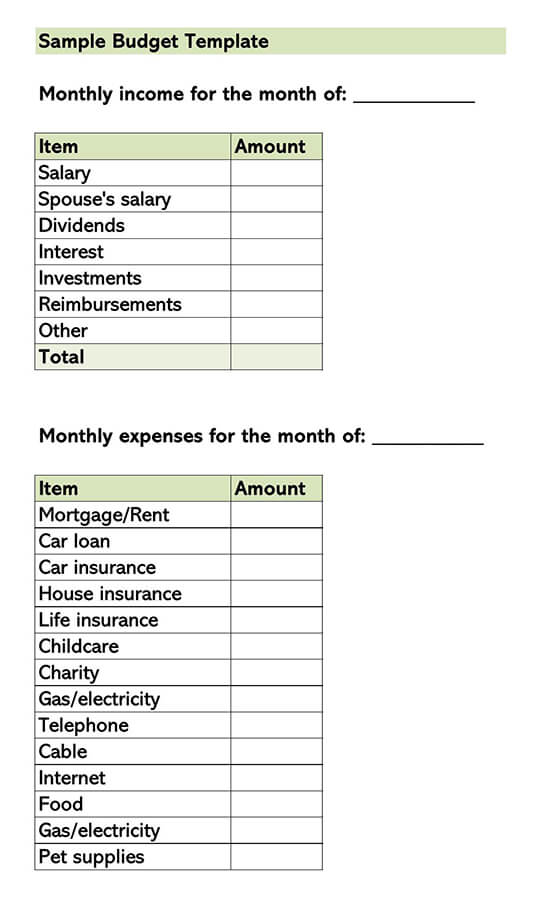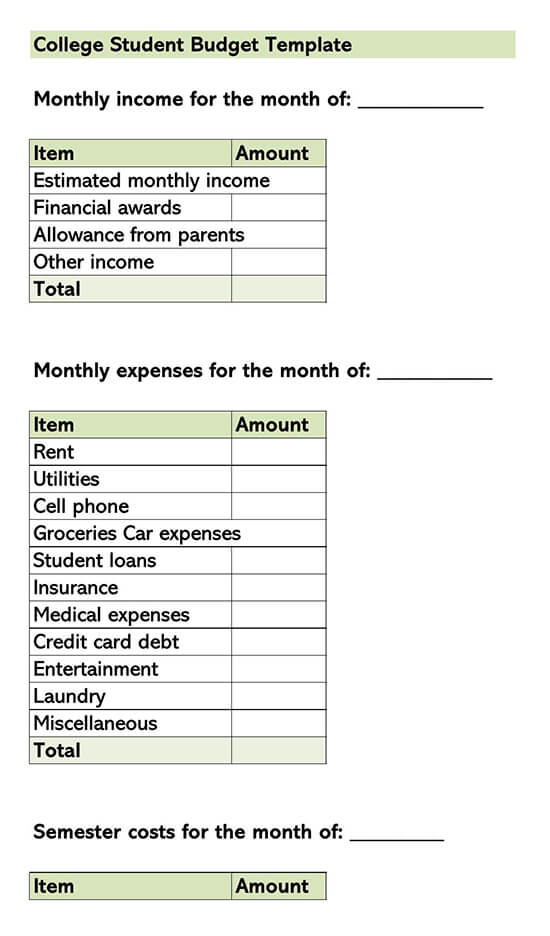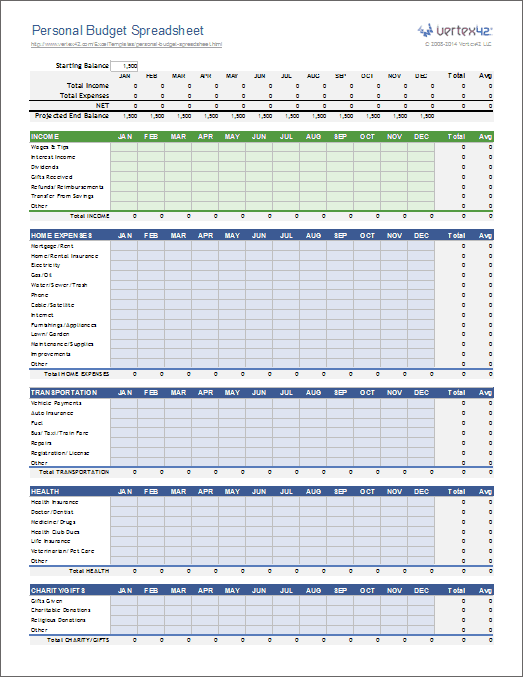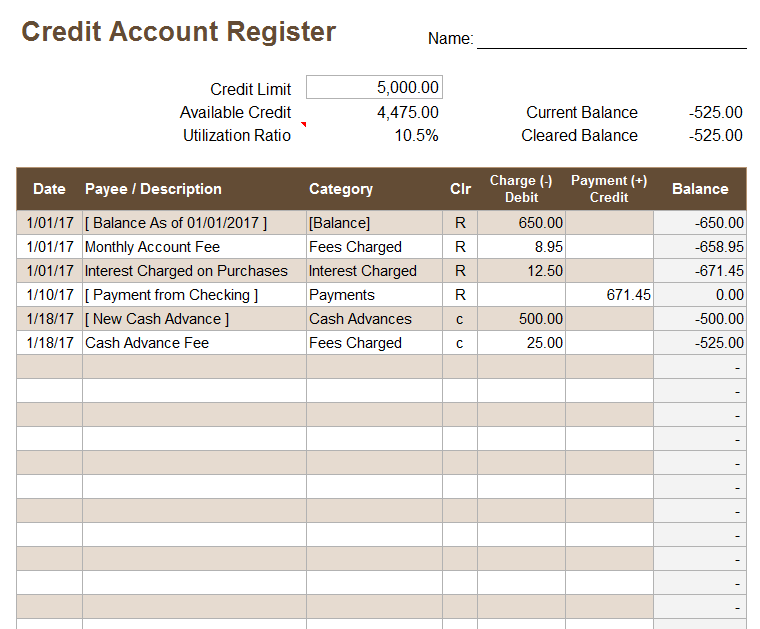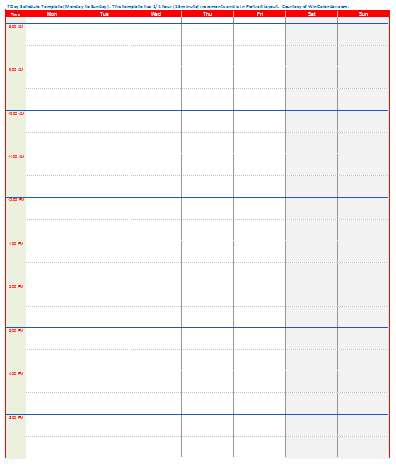An Expense Budget is a document used by businesses to manage their money more efficiently.
Whether running a business, knowing how to manage your money is essential for success. This is why budgeting is so essential. It helps you track your incoming revenue and outgoing expenses over a specific period of time so that you can estimate future budgets. This is kept track of using an Expense Budget.
It works by setting a specific amount as your budget starting point and then calculating the business’s expenses and income. Let’s say you have a budget of $10,000 to cover running your business. Your income from the month is $12,000 but your expenses for the month are $9,000. This leaves you with a $3,000 profit for the month and you have stuck to your monthly budget. Let’s say that your expenses were $13,000 for the month. This would mean you are over your original $10,000 budget.
So, an expense budget allows you to calculate how much money you will need to cover future months and keep track of all expenses so that you don’t go over budget.
Types of Business Expenses
There are 3 types of spending that are common in most businesses:
- Fixed – a fixed expense is one that does not change, or only changes slightly, such as the rent you pay for your office.
- Variable – a variable expense is one that can vary from one month to the next and is usually a business’ largest expense. One example is the company’s payroll, which can change each month due to overtime and paying for freelance work.
- Periodic – this would include payments that are not made frequently or that haven’t been planned for, such as having office equipment breakdown and paying for repairs or replacements.
How to Create an Expense Budget
Once you find a template that works for you, you begin creating your expense budget. You will generally have a column labeled for each month across the top. Down the side is where you would list your expense categories and expenses.
Step 1 – Income sources
Adding your income sources to your expense budget is the first step. It will show you how much money you have coming in from sales, investments, etc.
Step 2 – Expenses
Next, you will add in your monthly expenses. Most start with Fixed Costs because these are the expenses that tend to remain the same each month. Next would be your variable expenses, which gives you some room to make changes for future months. Last is your periodic expenses, which can be a bit harder to predict. It may help to look back on past months to see what unexpected expenses have come up before. For example, you know that your printer is on its way out but you don’t know how long it will last. You could set aside the amount needed for a replacement as a one-off expense. It’s better to have the funds there than not.
Once you have your expenses listed, you can subtract this from your income sources. What is left over is your profit. This can then be added back into your budget to cover things that you want for your business.
What to Include in an Expense Budget
Every expense budget will differ from business to business, but there are key things that you should include. A basic expense budget includes:
- Your income sources – this includes earnings, sales, loans, income from investments, savings, and so on.
- Your fixed costs – this includes rent, utilities, payroll, accounting services, internet, web hosting, bank fees, insurance, and legal services.
- Your variable expenses – this includes commissions, materials, freelance or contractor wages, advertising, and marketing costs, and events.
- Your periodic or one-time expenses – this would include the purchase of computers, software, furniture, and office supplies.
What not to include
Not all spending gets added to your expense budget:
- Directs costs – this represents how much you spend to make your product and shouldn’t be added to an expense budget. This would go into a sales forecast.
- Asset purchases – this would include larger purchases, such as inventory, large equipment purchases, and location improvements.
- Loans and payments – this would include things like the principal you pay on a loan.
Free Worksheets & Templates
Here are free expense budget templates and worksheets that can be customized:
Frequently Asked Questions
What percentage of business income should be expensed?
You should aim for no more than 30% of your total business revenue.
Are gifts to customers considered an expense?
Yes, the can be considered an expense but only a percentage of this is deductible.
What percentage of meals and entertainment can be considered an expense?
You can deduct up to 50% of expenses related to meals and entertainment when doing business with a client.
What are some examples of things that can not be considered a business expense?
Things like penalties, fines, and membership fees can not be considered a business expense.
